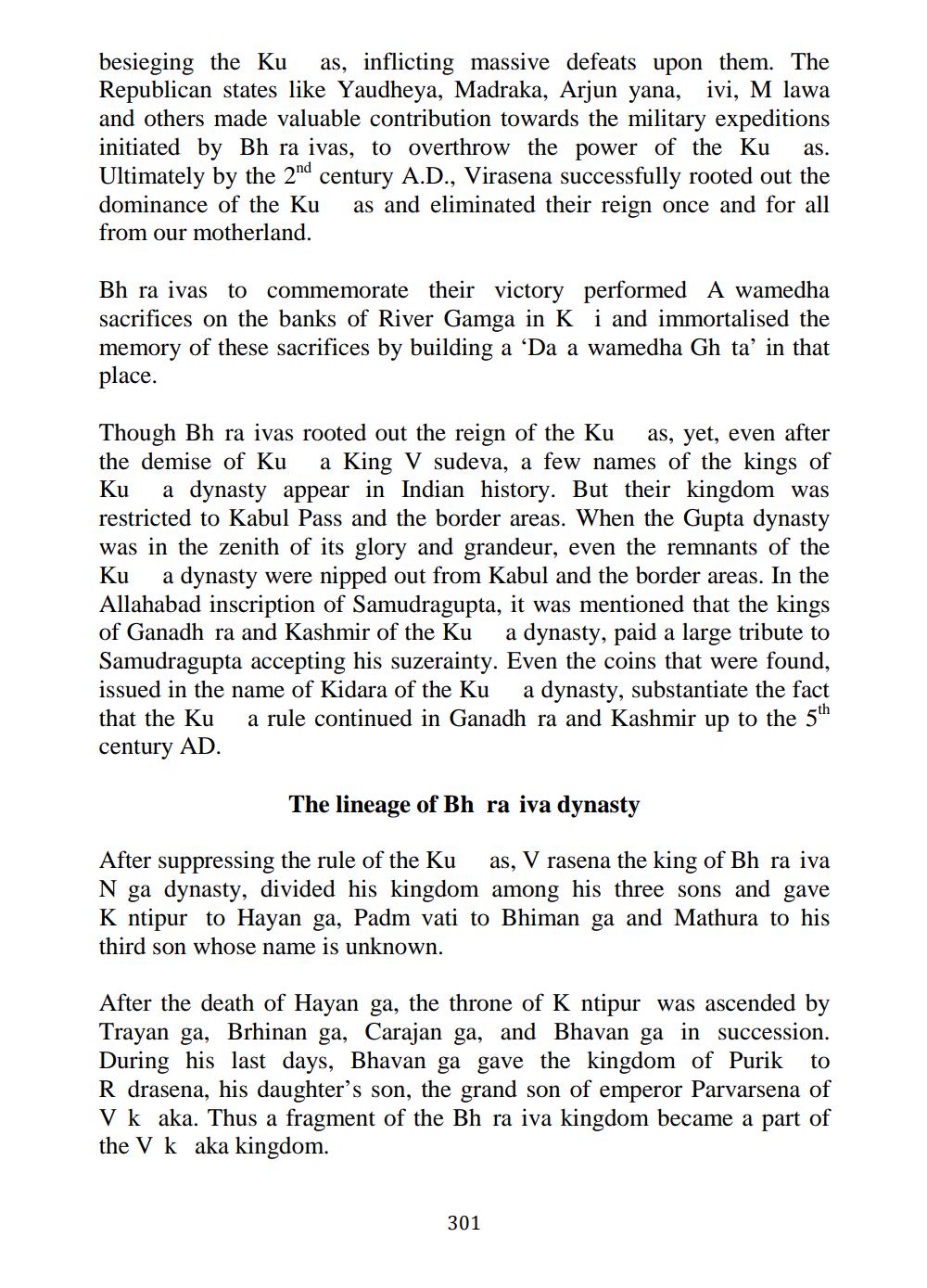________________
besieging the Ku as, inflicting massive defeats upon them. The Republican states like Yaudheya, Madraka, Arjun yana, ivi, M lawa and others made valuable contribution towards the military expeditions initiated by Bh ra ivas, to overthrow the power of the Ku as. Ultimately by the 2nd century A.D., Virasena successfully rooted out the dominance of the Ku as and eliminated their reign once and for all from our motherland.
Bh ra ivas to commemorate their victory performed A wamedha sacrifices on the banks of River Gamga in K i and immortalised the memory of these sacrifices by building a 'Da a wamedha Gh ta' in that place.
Though Bh ra ivas rooted out the reign of the Ku as, yet, even after the demise of Ku a King V sudeva, a few names of the kings of Ku a dynasty appear in Indian history. But their kingdom was restricted to Kabul Pass and the border areas. When the Gupta dynasty was in the zenith of its glory and grandeur, even the remnants of the Ku a dynasty were nipped out from Kabul and the border areas. In the Allahabad inscription of Samudragupta, it was mentioned that the kings of Ganadh ra and Kashmir of the Ku a dynasty, paid a large tribute to Samudragupta accepting his suzerainty. Even the coins that were found, issued in the name of Kidara of the Ku a dynasty, substantiate the fact that the Ku a rule continued in Ganadh ra and Kashmir up to the 5th century AD.
The lineage of Bh ra iva dynasty
After suppressing the rule of the Ku as, V rasena the king of Bh ra iva N ga dynasty, divided his kingdom among his three sons and gave K ntipur to Hayan ga, Padm vati to Bhiman ga and Mathura to his third son whose name is unknown.
After the death of Hayan ga, the throne of K ntipur was ascended by Trayan ga, Brhinan ga, Carajan ga, and Bhavan ga in succession. During his last days, Bhavan ga gave the kingdom of Purik to R drasena, his daughter's son, the grand son of emperor Parvarsena of V k aka. Thus a fragment of the Bh ra iva kingdom became a part of the V k aka kingdom.
301




